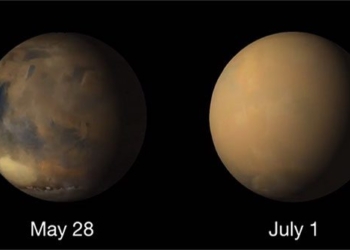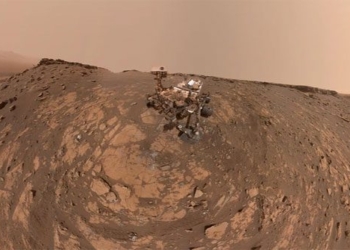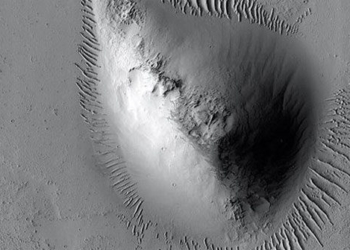Nearly five decades ago, NASA launched the Viking Program (1975-1983), an unmanned mission to explore Mars with the goal of searching for signs of life on the Red Planet.
Over the course of eight years, the American space agency sent two orbiters known as the Viking Orbiter and a lander called the Viking Lander, equipped with cameras for photography, infrared spectrometers to detect water vapor, and infrared radiometers for thermal mapping.
Despite the fact that the mission took place 48 years ago, some researchers today have highlighted the shortcomings in NASA’s Viking analysis of evidence for life on Mars. The most recent to comment on this is Professor Dirk Schulze-Makuch, President of the German Astrobiology Society.
“One of humanity’s greatest mysteries may have been decoded 50 years ago – but NASA may have inadvertently destroyed all evidence of it.” – Professor Dirk Schulze-Makuch made this observation in an article for “Big Think.”
Since its inception, NASA has undertaken various projects to chart the landscape of Mars and search for evidence of extraterrestrial life on the Red Planet. And NASA may have found such evidence, but scientists may have inadvertently “destroyed” it.
To support his argument, Professor Dirk Schulze-Makuch refers to the event when the Viking lander landed on the Martian surface in the mid-1970s.
When Viking 1 and 2 analyzed Martian soil for microbial life in the late 1970s and early 1980s, the results were… unconvincing.
Since then, most NASA scientists concluded that they had not found life on Mars because neither lander detected any abundant organic materials in the planet’s soil.
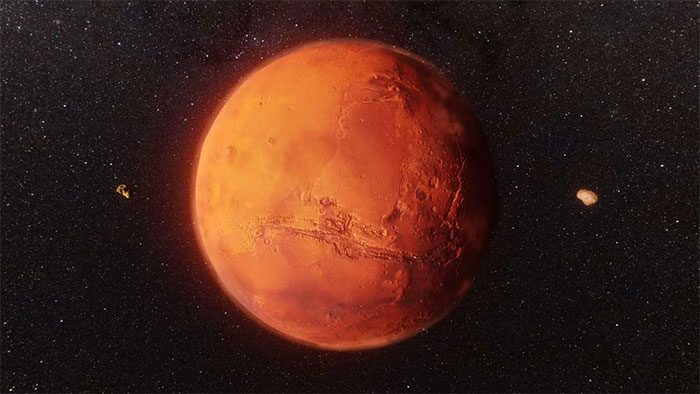
Mars – a planet that many scientists are eager to conquer. (Image: Internet).
How can there be bacteria without organic matter, the building blocks of life? Is it possible that there are bacteria on Mars but NASA’s lander soil tests inadvertently destroyed them in the process?
Here are the arguments made by German astrobiologist Dirk Schulze-Makuch published in “Big Think” on June 27, 2023.
Four Experiments Searching for Life on Mars
The Viking landers conducted four basic biological experiments on Mars. Viking performed these four experiments on Martian soil samples. Each lander collected samples in its onboard laboratory and then conducted the experiments. Although not as complex as Earth laboratories, they were considered fully capable of detecting living bacteria, if they existed.
Life Detection Experiment (1) aimed to search for signs of metabolic processes, chemical reactions in organisms that sustain life processes. This includes converting energy from food into usable energy to nourish cells; converting food into building blocks for proteins, lipids, nucleic acids, and some carbohydrates; and eliminating metabolic waste.
Thermal Release Experiment (2) sought evidence of organic synthesis.
The first two experiments seemed to yield positive results.
However, the third experiment, Gas Exchange Experiment (3), did not – this is the crux of the issue, which will be clarified later.
First, it added a small amount of water to the samples. This was an attempt to see if any inactive bacteria could be revived by moisture, as Mars is extremely arid. The experiment also supplemented water containing 19 amino acids, vitamins, other organic compounds, and a small amount of inorganic salts.
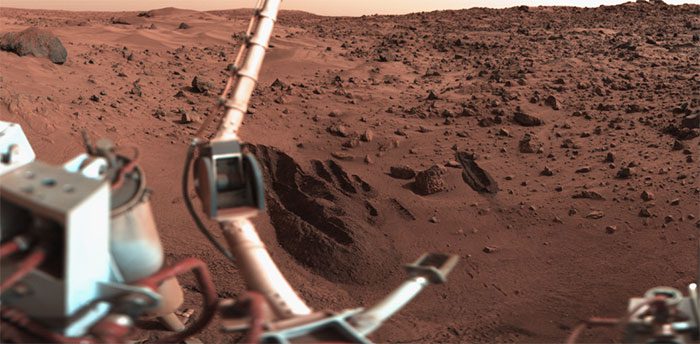
NASA’s Viking 1 lander captured this image of the surrounding sand dunes and rocks on May 26, 1977. (Image: NASA/ Wikimedia Commons / Roel van der Hoorn (Public Domain).
Scientists were excited by the initial positive results from the Life Detection Experiment and the Thermal Release Experiment. However, there was a significant issue.
The Viking landers also searched for organic materials in the soil using their fourth experiment, which was the Gas Chromatography-Mass Spectrometry (GC-MS) (4).
All that Viking found was small traces of chlorinated organic matter. These are organic compounds containing at least one covalently bonded chlorine atom. Since only these compounds were found and no other organic materials, the mission scientists concluded that they were likely contaminants from Earth clinging to the landers. They were not products of life and may not even have originated from Mars.
The absence of other organic materials was a significant blow to the possibility of life existing on Martian soil.
“Without organic matter, there can be no life”
Professor Dirk Schulze-Makuch wrote:
[The Viking landers also carried a tool to detect organic compounds. It found small amounts of chlorinated organic matter, which was interpreted at the time as a result of contamination from Earth. This led Viking project scientist Gerald Soffen to famously proclaim, “Without organic matter, there can be no life.” In other words, there can be no life on Mars without organic compounds. Therefore, Gerald Soffen concluded, like most other scientists at the time, that the Viking project failed to find evidence of life on Mars].
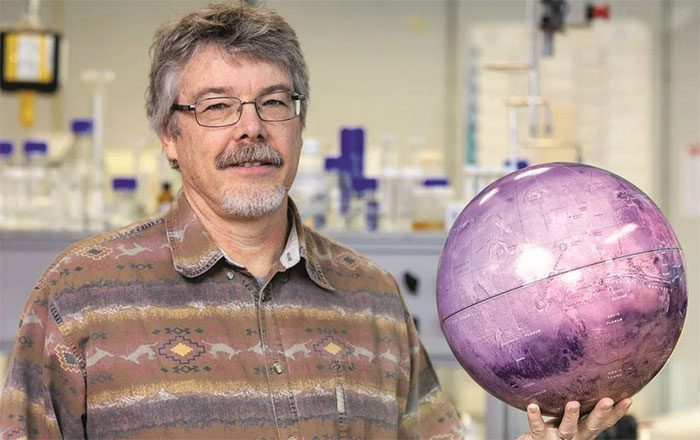
Professor Dirk Schulze-Makuch recently pointed out the shortcomings in analyzing evidence for life on Mars. (Image: Internet).
It turns out that decades later, there are organic compounds on Mars. And they originate from the Red Planet, not from contaminants brought there by spacecraft from Earth. NASA’s own Curiosity and Perseverance rovers have confirmed this organic matter without a doubt. Previously, the Phoenix Mars Lander was the next mission after Viking to search for organic materials.
Similar to Viking’s findings of chlorinated organic compounds, it is also known that Martian soil contains perchlorate, which can destroy organic molecules. This may also help explain the very low abundance of organic materials at the locations where the Viking landers sampled. Meanwhile, most of the organic materials found recently have been preserved in rocks.
Destruction of Life Evidence?
One of the main goals in the Viking experiments was to add a small amount of water to the soil samples. The idea was to make bacteria in the soil, which might be inactive due to the extremely dry and frozen conditions on Mars, more active by adding water that could rejuvenate them to function again.
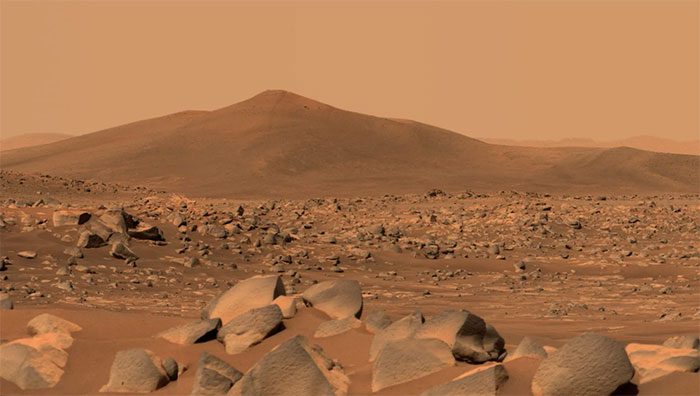
The dry and harsh terrain of Mars. (Image: NASA / JPL-Caltech / ASU / MSSS).
However, Professor Dirk Schulze-Makuch disagrees. He believes that bacteria on Mars are well adapted to the harsh and extremely arid conditions. Adding water is no different from “drowning” them.
Technically, one might say that moisture is being increased for them, but simply put, this action is akin to submerging them.
Perhaps bacteria on Mars are similar to those on Earth in the Atacama Desert, which survive on salts without liquid water. – These bacteria utilize a process called hygroscopy, where certain salts in the soil absorb water directly from the relative humidity of the air.
This is why Professor Dirk Schulze-Makuch believes that NASA’s Viking project contributed to the destruction of evidence of living microorganisms on Mars after Viking’s (3) experiment, causing the bacteria to gradually die off afterward.








































